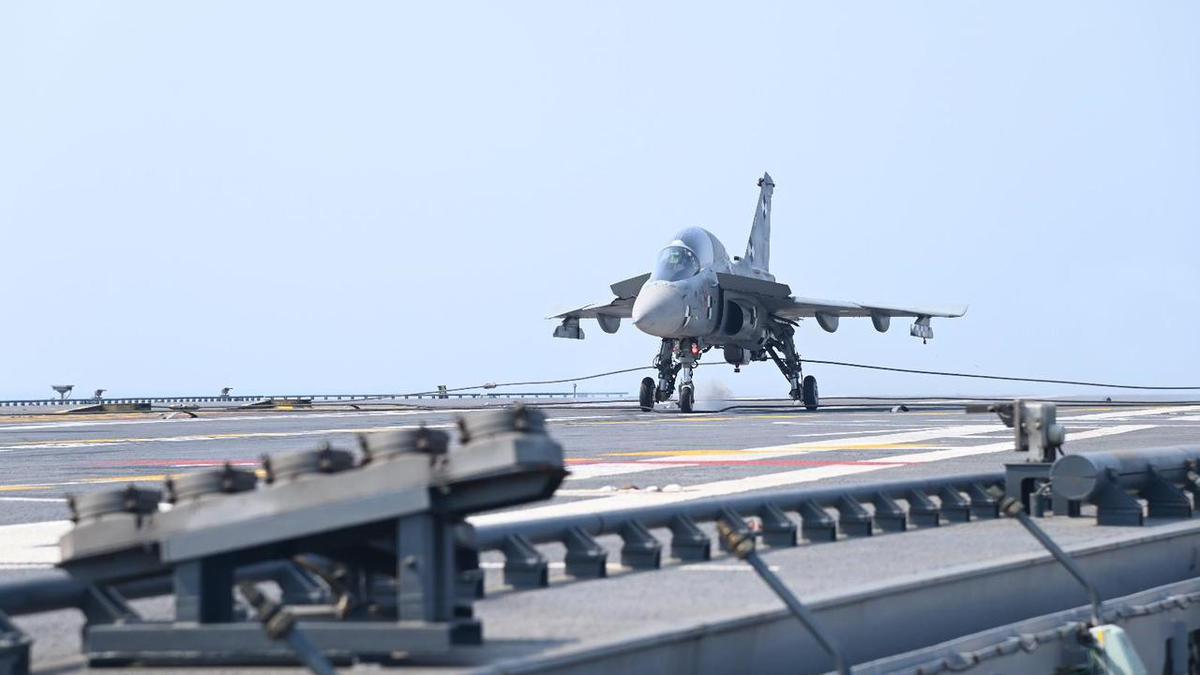SOURCE: RAUNAK KUNDE / NEWS BEAT / IDRW.ORG


In 2020, Hindustan Aeronautics Limited (HAL) offered its LCA-Navy LIFT (Lead-in Fighter Trainer) aircraft in response to the US Navy’s search for a new trainer jet program. While the Tejas LIFT boasts advanced features, it ultimately fell short of the US Navy’s specific requirements.
The LCA-Navy LIFT falls under a niche category of advanced jet trainers. These trainers offer superior manoeuvrability and more sophisticated electronics compared to their older counterparts. Additionally, they provide training for various air combat scenarios, including air-to-air combat, missile defence, and strike missions.
However, the US Navy wasn’t seeking such a comprehensive training platform. Their primary focus was on a trainer specifically designed for carrier-based operations.
While the LCA-Navy LIFT wasn’t designed for carrier landings, HAL proposed its use for “touch-and-go” manoeuvres. This technique allows trainee pilots to experience the approach and landing dynamics on a carrier without actual deck landings.
However, the US Navy likely desired a trainer capable of replicating the entire carrier landing process, including arrestment by the arresting gear. The LCA-Navy LIFT, not being a carrier-operable aircraft, couldn’t fulfil this requirement.
According to sources at HAL, the US Navy might have harboured concerns about using a delta-wing aircraft like the LCA-Navy LIFT for carrier pilot training. Delta wings, while offering advantages in manoeuvrability, can exhibit different low-speed handling characteristics compared to conventional wings. This might have posed challenges in simulating carrier landings for trainee pilots.
While the LCA-Navy LIFT being a foreign platform might have been a consideration, it wasn’t the deciding factor. The US Navy operates the T-45 Goshawk, a heavily modified version of the British Hawk trainer jet. Similarly, the Boeing-Saab T-7A Red Hawk is a joint US-Swedish project. These examples demonstrate the US Navy’s openness to international collaborations for trainer jets.
The official reason behind the US Navy’s rejection of the LCA-Navy LIFT remains undisclosed. However, the factors discussed above – niche capabilities, lack of carrier operation suitability, and potential delta-wing concerns – likely played a significant role.
NOTE : Article cannot be reproduced without written permission of idrw.org in any form even for YouTube Videos to avoid Copy right strikes. Websites doing illegal reproductions will get DMCA and Legal Notices.